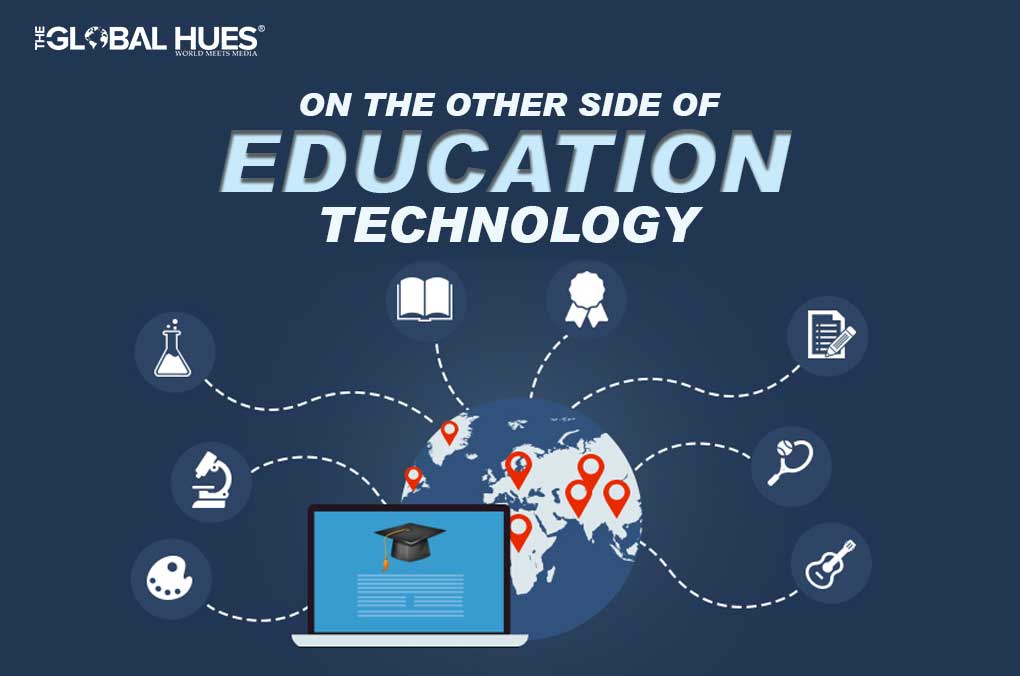Online education has benefited the community in many ways, however, the disadvantages following e-learning can’t be ignored.
The schools were shut down as a downside of the pandemic spreading like wildfire. Education found a way via digital mediums to reach the students and avoid any case of halt in imparting necessary learnings. However, India is still on a growing curve of digitalization, therefore many problems started initiating in the Ed-tech segment. Although there was a growth prior to covid-19 in the Digital landscape of India, it was mostly restricted to social media platforms like WhatsApp, Facebook, and YouTube. The journey from physical classrooms to e-learning platforms was full of challenges, struggles, and overcomings.
E-learning has proven to be an excellent tool but it possesses a great risk of dividing by class. One key element of online education is access to fundamental hardware and internet connectivity. Not everyone can afford expensive gadgets. The break in connectivity also means hindrance in education. The fundamental right of ‘Education for All’ might become null and void among different geographies and strata of society. Students lack practical knowledge while learning from a screen.
Theoretical knowledge is not sufficient for fields like law, medicine, research, art, etc. Teachers’ education is another drawback encircling the digital space of learning in India. The teacher’s ability to understand and adopt the technology will define the quality of education. Most teachers are not tech-savvy and have trouble with the new tools required to impart knowledge in an effective manner.
Are we Lost?
India is a land of diversity within which there are plenty of regional languages. The ed-tech sector mostly exists and gears towards English-speaking diaspora, with good quality content lacking in other languages. Students who belong to regional dialects have limited self-learning opportunities and suffer the transition from traditional modes to new systems. A key aspect of school education lies in the fact that emotional and psychological growth are essential elements for any kid.
With education limited to online mode various qualities like teamwork, peer interaction, foster collaboration, etc, are evaporated. The lack of holistic development remains a key concern in the digital landscape. The motivation to self-study is essential in online learning which is hard to come by in most kids. The lost sense of direction is a huge cause of concern.
Previous data suggest a pattern of students from weaker sections of society permanently drop out if they take a short break in education due to certain reasons. According to the NUEPA 2016 report, the average dropout rate in India across secondary schools was noted to be 17.06 percent, where high numbers belonged to rural areas. This data is worrisome, as due to the pandemic many students faced temporary breaks in studies. How many students will continue online or stay in the education system post-pandemic is a gloomy outlook at the current time. To solve this problem, initiatives by the government to ensure a robust education system and accessibility to necessary devices are needed.
Statistics show more than 40 percent of government school students in Delhi were unable to attend online classes due to a lack of network inaccessibility or economic fallbacks. According to UNESCO (2020), 0.32 billion students approximately in India are drastically affected by the closing of schools due to the COVID-19 pandemic, out of which 84% belong to rural sections and 70% are attending government schools. Online learning provides easy outlets of distraction for students filtering any chance of getting effective education. Students are tempted to use the technological resources for irrelevant purposes, and use devices inappropriately. Inculcating the habit of media literacy is very difficult.
The Right Direction
The digital infrastructure needs to scale up. There’s a lack of sustainable WiFi models for public use at large. The technology needs to be designed keeping in mind the connectivity issues arising in remote areas, especially when the chances of weak signal persisting are very high. The penetration of interactive content needs improvisation. Innovative pricing models must be introduced to the market by collaborating with schools and the college’s academic syllabus to impart the right curriculum to students.
Educators need to collaborate with teachers to help student’s problem-solving skills and personal development while adopting the Digital channels. The learning devices must contain apps and software important for education. Voice navigation within apps is a critical element, along with features like translation, UI/UX, and transliteration of the interface. Entrepreneurs need to step up in the ed-tech market and work to bridge the gaps in the system. The impact of pandemic should not hinder the growth curve of future generations.
- New Education Policy Simplified
- Affordable And Accessible Quality Education
- List Of 10 Best Online Courses To Boost Resume
- Digital Learning: A New Era Of Education
- NEP 2020: India Changes Education Policy After Years
- How Can You Make Online Learning More Effective?
- The Indian EdTech Industry: Trends To Watch In Future



